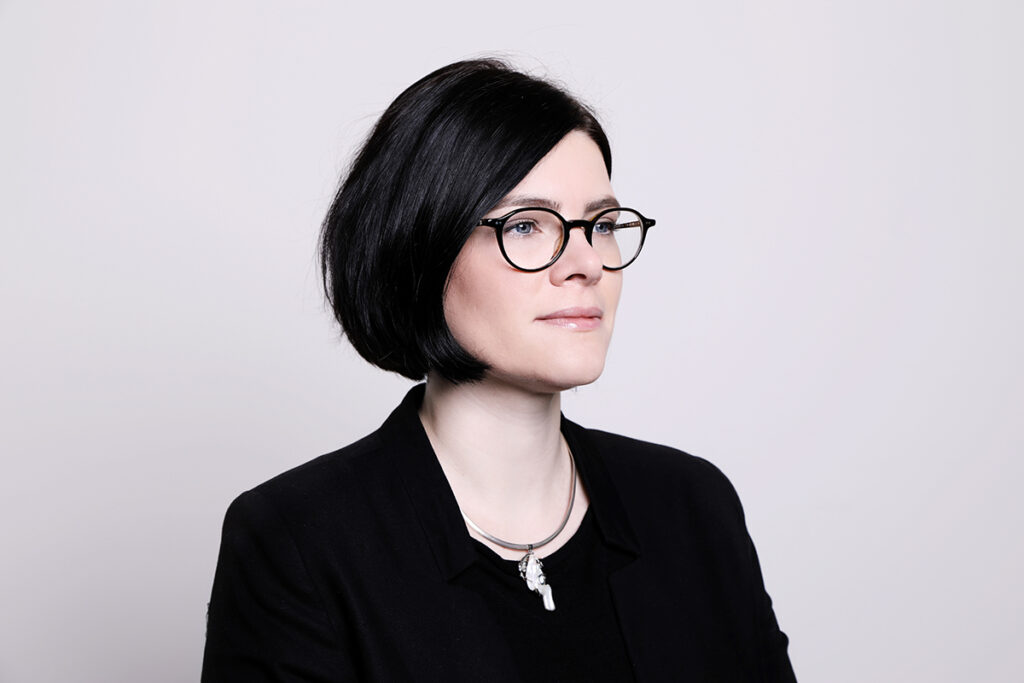
© Sophie Margue
My fascination with queens and princesses probably goes back to childhood, though I abandoned the stereotype propagated by pop culture early on. Long story short: watching my boyfriends fighting each other or killing an imaginary dragon from the sidelines bored me. I realised I didn’t want to waste my time waiting for a fairy tale prince. Over time, my fascination with noble women transformed into a keen interest in history. I abandoned romanticised ideas on medieval kings and queens and (re)discovered a more intriguing side of the Middle Ages thanks to an internship at the district museum in my hometown. Throughout my graduate years, I focused on general questions of historical science such as methodology and source theory. While completing my master’s thesis on throne succession in medieval Central European monarchies in the 11th and 12th centuries, I realised how heavily the historiography of the 19th and early 20th centuries, which was predominantly shaped by masculine academics and intellectuals, influenced the choice of subject and the theoretical frameworks of my research field.
My work experience at the Austrian Academy of Sciences in Vienna helped me gain more insight into the practice of editing late medieval administrative documents, but also disproved the doubts I had about prevailing narratives in research literature, such as the lack of charters and other administrative sources documenting the queens’ agency, as well as a smaller body of publications on female ruling practices. Looking back, this was probably what first prompted me to start collecting the queenly charters and building the foundations for my database whichs I successfully completed in cooperation with Regesta Imperii (AW Mainz) last year.
You could compare my work to a puzzle.
The unshakable idea of medieval monarchy as a realm of one man, passed down from father to son, was first questioned in the late 1980s. Pioneers of gender and women’s history examined mostly the High Middle Ages, the golden era of queenly power, so the late medieval female sovereigns were overshadowed by their predecessors. The same applies to the House of Luxembourg. In the 13th century, the County of Luxembourg was twice controlled by a female regent: by Countess Ermesinde in 1226-1247 and Beatrix of Avesnes in 1288-1294. Both of them took control of the Luxembourgish territorial complex as regent-dowagers in turbulent times and, moreover, their regencies accelerated the economic and political rise of the country and the dynasty. As there is research on this topic already, I decided to examine the period between 1292 and the 1450s, when the House of Luxembourg governed over major parts of Central Europe and when patriarchal patterns of monarchies were challenged by profound dynastic crises. This was also an era of transition from the high medieval consortium regni, i.e. king’s and queen’s close cooperation, to a system of electoral monarchy, based on the participation of estates (in the Kingdoms of Bohemia or Hungary) or the close circle of prince electors (in the Holy Roman Empire), which had a negative impact on queens’ agency. I decided to tackle this gap and analyse the modalities of ruling practices of king’s consorts in the Late Middle Ages, the era in which the role of female sovereigns was progressively restricted, reducing female sovereigns to fulfilling their representative and biological functions according to theological, political and legal authorities and intellectuals.
You could compare my work to a puzzle. My day-to-day work is mainly archival research, sometimes on site, sometimes online. As the documents I have compiled show, there are stark differences between prevailing narratives and queens’ actual agency as documented in the charters. Queen-consorts had various resources at their disposal: these could come from her dowry, nuptial or morning gifts, and over a time royal women could acquire additional resources from complex revenue streams including not only lands and territorial rights but also income from taxes, fines, customs, gifts, markets, trading monopolies and even religious foundations. She might also have funds or lands which formed part of her dowry from her natal family or from lands she inherited in her own right as an heiress. Moreover, queen-consorts had significant access to the political decision-making process of their husbands. All this gave the premodern female sovereign considerable political wherewithal and allowed her to build and maintain political networks through her affinity with office holders who assisted in administration of her lands and played a key role in her power base across the composite monarchy – despite of all of the obstacles, restrictions and common narratives.
Anna Jagoš, born in Slovakia, got her master’s degree in History and Archival Science and her PhD in Historical Sciences at Masaryk University in Brno (Czech Republic) in 2015. She did several internships abroad and was a praedoc and postdoc researcher on several projects in Czech Republic, Austria and Luxembourg. In 2019-2021, she conducted research on female ruling practices and role of king’s consorts descending from the dynasty of Luxembourg within the FNR CORE junior project FEMPOW at the University of Luxembourg1. Currently, Anna is preparing a follow-up project focused on queens’ agency with the help of graphic modelling tools in the digital environment.
https://fempow.uni.lu (checked on August 2, 2022).
Als partizipative Debattenzeitschrift und Diskussionsplattform, treten wir für den freien Zugang zu unseren Veröffentlichungen ein, sind jedoch als Verein ohne Gewinnzweck (ASBL) auf Unterstützung angewiesen.
Sie können uns auf direktem Wege eine kleine Spende über folgenden Code zukommen lassen, für größere Unterstützung, schauen Sie doch gerne in der passenden Rubrik vorbei. Wir freuen uns über Ihre Spende!
